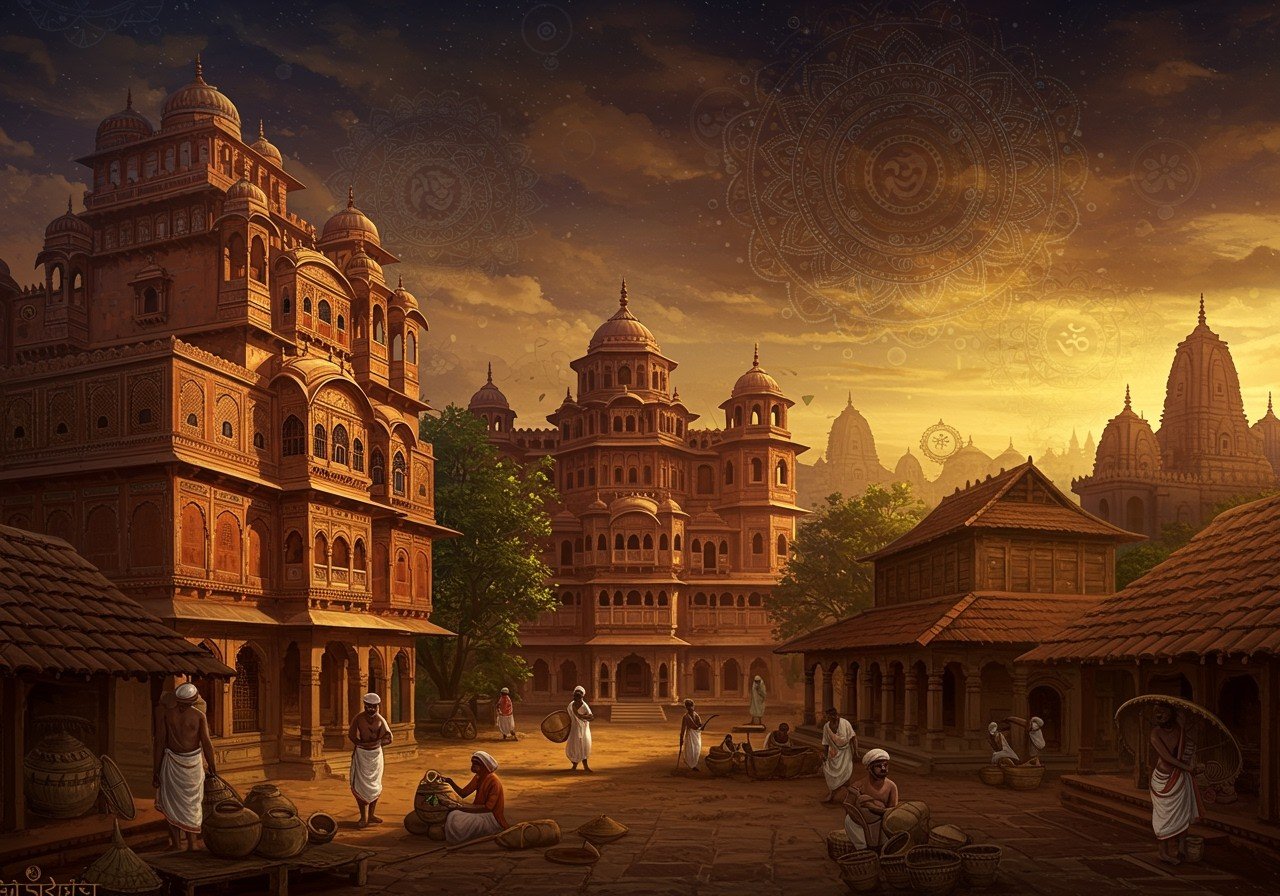
Vernacular architecture, also known as traditional or indigenous architecture, refers to building styles that have evolved over time based on local climate, culture, and readily available materials. In India, a land of diverse climates and rich cultural heritage, vernacular architecture manifests in a myriad of regional styles, each with its unique characteristics and significance.
Understanding Vernacular Architecture
Indian vernacular architecture is characterized by its informal, functional design using local materials to meet the needs of the local population. It varies regionally and includes structures like Koti Banal, Bhunga, Bamboo House, Mud and Timber, and Chuttillu, which are climate-responsive, energy-efficient, and sustainable. This architecture reflects the local culture, climate, and materials, with contemporary projects showcasing these elements. Although rich in cultural tradition, vernacular architecture in India is undergoing changes and can be found in both rural and urban areas, encompassing various building types such as houses, temples, and public buildings. It emphasizes the use of locally sourced materials like bamboo, timber, mud, and stone. This not only reduces the environmental impact of construction but also promotes sustainability. Furthermore, vernacular architecture often incorporates traditional building techniques passed down through generations, showcasing local craftsmanship and knowledge.
Vernacular Architecture of South India
South Indian vernacular architecture is deeply influenced by the region’s hot and humid climate. Features like sloped roofs, courtyards, and verandas are common, designed to maximize ventilation and provide shade. Traditional homes often utilize laterite stone, timber, and clay, reflecting the available resources. Specific regional variations include the “thinnai” (raised platform) in Tamil Nadu and the “nalukettu” (central courtyard house) in Kerala. Examples of South Indian vernacular architecture include the grand Chettinad mansions and the traditional Kerala tharavads. Temple architecture, particularly in Tamil Nadu and Karnataka, has significantly influenced residential designs, showcasing intricate carvings and ornate details. Contemporary homes increasingly incorporate elements of traditional design, blending the old with the new while preserving the essence of South Indian architectural heritage.
Discover more about Dravidian temple architecture.
Vernacular Architecture of North India
In contrast to the South, North Indian vernacular architecture is adapted to a climate characterized by extreme temperatures. Thick walls, flat roofs, and small windows are typical features, designed to insulate against both heat and cold. Materials like sandstone, mud, and bamboo are commonly used. Distinctive elements include the “chowk” (central courtyard) in Rajasthan and the “havelis” (traditional townhouses) in Punjab. Examples of North Indian vernacular architecture include the “kath-kuni” houses of Himachal Pradesh and the stone-built dwellings of Rajasthan. Mughal architectural influences are evident in regions like Uttar Pradesh and Delhi, adding a layer of grandeur and ornamentation. Preserving these traditional architectural styles in the face of rapid urbanization presents a significant challenge but remains crucial for maintaining cultural heritage.
Learn about the differences between Dravidian and Nagara architecture.
Cultural Significance and Preservation
Vernacular architecture is deeply intertwined with regional identity and cultural traditions. These structures are not merely buildings but living expressions of community life, playing a vital role in social practices, rituals, and ceremonies. Preservation efforts are essential to safeguard this invaluable heritage. These efforts include heritage conservation projects, government policies that promote traditional building techniques, and initiatives that involve local communities in the restoration process. Vernacular architecture also serves as a source of inspiration for sustainable modern construction, demonstrating how traditional wisdom can inform contemporary design. Successful preservation projects include the restoration of traditional homes and the revitalization of heritage sites. While tourism can contribute to the economic viability of preserving vernacular architecture, it also poses challenges in terms of managing its impact. The future of vernacular architecture depends on finding a balance between preservation and the demands of modern development.
Plan your pilgrimage to explore India’s architectural marvels.
Connecting with India’s Architectural Heritage Through Poojn.in
Poojn.in, India’s leading online store for cultural goods and services, offers a unique opportunity to connect with India’s rich architectural heritage. Explore our collection of authentic Panch Ratna (five precious stones) sets, symbolizing the same spiritual significance found in ancient temples and monuments. We also offer a wide range of products related to traditional architecture:
- Panch Ratna sets: Available at affordable prices, these sets allow you to bring the auspicious energy of these sacred stones into your home. Connect with the spiritual symbolism found in iconic structures like the Pancha Rathas of Mahabalipuram.
- Temple worship items: Discover a variety of items that reflect traditional architectural elements, allowing you to create a sacred space that resonates with India’s rich heritage.
- Holy idols: Find beautifully crafted idols in traditional architectural styles, adding a touch of authenticity to your home temple or prayer space.
- Decorative items: Enhance your home decor with items inspired by regional temple architecture, celebrating the beauty and artistry of India’s vernacular traditions.
Poojn.in also offers:
- Complete Pooja Samagri Collection: Everything you need for your spiritual practices.
- Traditional Holy Utensils: Authentic utensils for your rituals and ceremonies.
- Authentic Temple Decoratives: Bring the sanctity of a temple into your home.
- Sacred Idols for Home Temples: A wide selection of idols for your personal worship.
Visit Poojn.in today to explore our full range of products and deepen your connection to India’s architectural and spiritual heritage.
Conclusion
Vernacular architecture in India represents a profound connection between culture, environment, and community. It is a testament to the ingenuity and resourcefulness of local artisans and builders who have created structures that are both functional and aesthetically beautiful. Preserving these traditions is not just about maintaining historical buildings; it is about safeguarding a vital part of India’s cultural identity. By appreciating and supporting vernacular architecture, we contribute to a sustainable future that honors the wisdom of the past.


